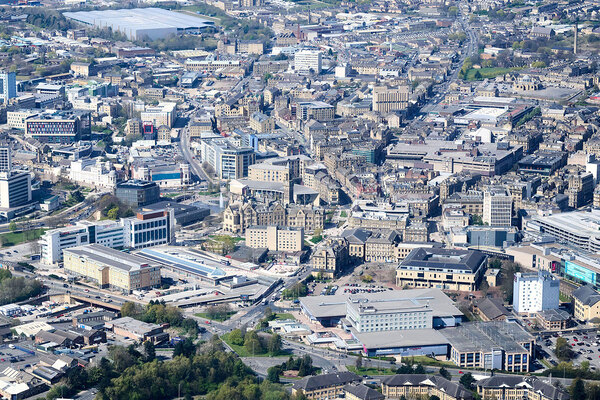Expert fire report for Grenfell based on plans which did not include cladding, document reveals
A fire safety report into the doomed refurbishment of Grenfell Tower was based on early plans which did not include the cladding and was never followed up despite a recommendation to do so, Inside Housing can reveal.
Inside Housing has obtained the previously unreleased ‘Outline Fire Safety Strategy’ for the refurbishment of the tower, which was written by fire safety firm Exova Warringtonfire in October 2013.
The 10-page document (available below) says the refurbishment plans would have “no adverse effect on the building in relation to external fire spread”, but adds that this view was to be “confirmed by an analysis in a future version of this report”.
But the report was based on outline plans for a simple conversion of the lower floors to residential use and did not include the addition of external cladding, or other major changes such as new windows.
It was the last version of the report ever published, with Exova not asked back to complete the work based on the final plans.
The Grenfell Tower fire killed 72 people in June 2017, when flames ripped through the aluminium and polyethylene cladding system and trapped residents sheltering in their flats.
Related Files
The intention to “fully re-clad” the tower as part of the refurbishment dates back to at least 2012 – a year before the report was written – council documents show.
However, in a summary of the work it was asked to assess, Exova’s report cites the creation of new apartments and office space – but not the cladding of the building.
A spokesperson for the firm confirmed it never saw specifications for the cladding in writing the report.
It is not clear why Exova was not asked to comment on plans to fully clad the building, nor why it was not commissioned to complete the follow-up analysis it recommended.
A spokesperson for Exova said: “Exova was not instructed or engaged to produce a further report, nor was it engaged for the later stages of design, material selection, construction or sign-off of the Grenfell Tower refurbishment project.
“In particular, Exova did not select, test, review or approve the cladding systems that were finally chosen and installed; nor did it ever have the level of information which would have been needed in order to carry out fire engineering work in relation to use of any system as part of the project.”
An ‘Outline Fire Safety Strategy’ is written as guidance on how to comply with building regulations when early plans are being drawn up.
The client listed in the Exova report is Studio E, the architectural firm which was engaged to design the refurbishment.
Grenfell Tower was owned by the Royal Borough of Kensington and Chelsea (RBKC) and managed by the Kensington and Chelsea Tenant Management Organisation (KCTMO). Building firm Rydon was appointed as the contractor for the refurbishment in 2014.
Residents were consulted on what type of cladding to use on the building in 2012, and originally selected a fire-retardant zinc material for the building.
But this was dropped in favour of a cheaper and far more flammable aluminium and polyethylene product in 2014, which was combined with a combustible plastic insulation on the building.
This cladding has been widely blamed for the rapid external spread of the fire in expert reports produced by the Grenfell Inquiry – which has completed its first phase of evidence.
The inquiry has seen the Exova report and has disclosed it to core participants. However, it has only publicly released one page of the 10-page document.
It is thought the document will be discussed in more detail in Phase 2 of the Inquiry - which is set to begin in 2020.
Rydon, Studio E and KCTMO did not comment due to the ongoing inquiry.
Elizabeth Campbell, leader of Kensington and Chelsea Council, said: “Bereaved families, survivors, and our communities want answers and want the truth. We want the same – Grenfell was a tragedy that must never happen again.”
A spokesperson for Grenfell United, the survivors’ and bereaved group, said: “It was clear from the evidence in the first part of the inquiry that the refurbishment of Grenfell tower was non-complaint and unsafe. This document is another reminder that all those involved in the design, management and signoff of the refurbishment have many questions left to answer both at the inquiry and to the police.”
Exova statement in full
Exova’s specialist fire consultancy division provided some limited consulting services to Kensington & Chelsea Tenant Management Organisation Limited (“KCTMO”), related to fire strategy and building regulations, as part of KCTMO’s overall fire safety strategy, ahead of the refurbishment of the Grenfell Tower block. This work was conducted mainly in 2012 and 2013 and primarily focused on the refurbishment of the bottom four floors of the block, where the creation of new apartments was a ‘material change of use’ for the purpose of Building Regulations and so came under a different regulatory regime.
Exova’s principal work was an outline fire safety strategy (OFSS) provided to KCTMO in 2013. Drafts were provided in September and October. At this point, the project was at the ‘concept’ stage – in other words, early in its development.
The OFSS is a roadmap which provides guidance to the client on the requirements to comply with Building Regulations during the design phase of the project for approval by Building Control after construction. It is not providing approval for a design.
The information that Exova was supplied with (by its client, KCTMO and members of its design team) in order to prepare this work did not include any specification in relation to any proposed cladding system. Exova was therefore unable to comment in that regard, and accordingly (1) the summary of the proposed refurbishment at the start of the OFSS, based on information provided by KCTMO, did not include any mention of cladding, and (2) later in the OFSS, Exova made very clear that any impact on external fire spread would need to be confirmed as part of a later report.
At an early stage in the project’s development, and provided only with high-level information, Exova’s advice on fire strategy was necessarily high-level as well: there was, at that point, no scope for the detailed technical fire engineering that would be involved in (for example) testing/certifying particular products or systems, or advising on their suitability. Exova was never asked for such advice.
Later, the project moved to the ‘design’ and ‘build’ stages, at which KCTMO appointed Rydon to have overall responsibility for the project. Rydon in turn appointed a number of consultants and sub-contractors, including some of those who had worked for KCTMO at the ‘concept’ stage, but it did not appoint Exova, whose ongoing involvement was minimal.
Exova was not instructed or engaged to produce a further report, nor was it engaged for the later stages of design, material selection, construction or sign-off of the Grenfell Tower refurbishment project. In particular, Exova did not select, test, review or approve the cladding systems that were finally chosen and installed; nor did it ever have the level of information which would have been needed in order to carry out fire engineering work in relation to use of any system as part of the project.
Exova had no role in conducting a Fire Risk Assessment (a statutory requirement) for the refurbished building, nor was it asked to provide any input into that exercise. Again, this was done at a later stage in the project.
Exova has fully supported the Public Inquiry from its inception, including providing extensive disclosure and access to all relevant information at the Inquiry’s request, and will continue to do so until the Inquiry’s work is complete.
The Grenfell Tower Inquiry
Closing statements
Day 85: victims' lawyers attack the fire brigade
Further expert evidence
Including some additional evidence from emergency call handlers, bereaved and relatives
Day 84: further evidence from survivors and relatives
Day 83: swift evacuation of tower possible if residents alerted
Day 82: initial fire was extinguished but then returned to the flat
Day 81: overheating fridge-freezer most likely cause of fire
Day 80: fire doors installed did not match product tested
Day 79: resident advised to stay put despite fire in flat
Day 78: insulation and cladding material below required standard
Day 77: molten plastic spread blaze down tower
Day 76: 'stay put' should be dropped when fire spreads across floors
Other witness evidence
Police, ambulance, gas suppliers, council, TMO and call room operators give evidence
Day 75: call room operators give evidence
Day 74: further evidence from TMO officers
Day 73: TMO boss failed to pass information to firefighters
Day 72: fire finally extinguished when gas switched off
Day 71: further questions over stay put advice
Day 70: the police evidence
The bereaved, survivors and relatives’ evidence
Day 69: video shows smoke billowing through fire door
Day 68: KCTMO removed self closing mechanism and never replaced it
Day 67: gaps in cladding fixed with duct tape
Day 66: 'don't fix broken system with a sticking plaster'
Day 65: survivor dragged disabled man down nine floors to safety
Day 64: KCTMO 'did not replace broken fire door'
Day 63: foam insulation inside cladding 'exposed' says survivor
Day 62: father gives harrowing account of son's death
Day 61: council’s management organisation slammed for faulty electrics
Day 60: stay put advice ‘led to deaths’, residents say
Day 59: residents describe problems with new windows
Day 58: survivor describes how daughter saved his life
Day 57: firefighter evidence ‘a slap in the face’, says survivor
Day 56: relations with contractor were ‘toxic’
Day 55: resident 'never happy' with stay-put advice
Day 54: tenant gives evidence about housing association
Day 53: stay put advice 'felt like trap'
Day 52: resident saved by son's phone call
The firefighters’ evidence
Day 51: firefighter feared encouraging residents to jump
Day 50: the LFB commissioner
Day 49: fire chief reveals frustration over lack of building plans
Day 48: internal fire spread 'bigger story' than cladding
Day 47: fire officer considered evacuating crews over building collapse fears
Day 46: 'we were improvising' senior firefighter admits
Day 45: firefighter urged for abandonment of 'stay put' policy
Day 44: firefighter recalls radio signal difficulties
Day 43: call hander 'uncomfortable' with insisting residents stay put
Day 42: residents only told to leave if they called fire brigade back
Day 41: breathing equipment delay 'hampered rescues on upper floors'
Day 40: chiefs told firefighters to abandon policy
Day 39: firefighters reveal dramatic rescue of children
Day 38: firefighters issue aplogies to families
Day 37: council 'unable to provide tower plans'
Day 36: QC defends inquiry process
Day 35: Javid would welcome interim recommendations
Day 34: water from hose 'too weak' to reach the flames
Day 33: 'oh my god, we've been telling people to stay put'
Day 32: further fire fighter describes lack of equipment and low water pressure
Day 31: 'incredibly difficult' task of recording information outlined
Day 30: struggle to maintain control over rescue operation described
Day 29: fire service 'overwhelmed' by survival guidance calls
Day 28: 'the building beat us'
Day 27: firefighters 'forced to abandon plans to reach roof'
Day 26: poor signage hindered rescue efforts
Day 25: water pressure left firefighting equipment 'like garden hose'
Day 24: decision to abandon 'stay put' explored
Day 23: TV images 'could have assissted' rescue effort
Day 22: description of hectic scenes in the control centre
Day 21: account from the fire service 'nerve centre'
Day 20: firefighter describes 'huge volume' of calls from trapped residents
Day 19: firefighter 'given no training on cladding fires'
Day 18: evacuation would have been 'huge catastrophe'
Day 17: firefighters describe access and lift issues
Day 16: scenes of carnage likened to 9/11
Day 15: firefighters recount trauma of survival guidance calls
Day 14: firefighters describe spread of blaze
Day 13: firefighters recall radio difficulties
Day 12: "it was like a war zone"
Day 11: questions raised over fire fighters' radios
Day 10: watch manager emotional under questioning
Day nine: lead firefighter 'not trained in stay put policy'
The expert reports: authors give evidence to inquiry
Day eight: where the fire started
Day seven: what was in the cladding?
Day six: the cause and spread of the fire
Day five: expert highlights key issues
Day four: firefighters defend response to fire
Day three: council and contractors appear for the first time
Day two: lawyers for the survivors make their case
Day one: expert evidence released on cladding and stay put
The commemoration hearings
30 May: Grenfell Council 'recognised it should not house disabled victim above four storeys'
29 May: Anger on day six of the Grenfell Inquiry
25 May: Grenfell families 'forced to live in chimney with stay put policy'
24 May: Grenfell family complained about father being housed on 17th floor
23 May: Tributes to children on third day of Grenfell hearings
22 May: Emotions run high as Grenfell bereaved shown footage of the tower burning
21 May: Grenfell victims share tributes as inquiry opens
Never Again campaign
In the days following the Grenfell Tower fire on 14 June 2017, Inside Housing launched the Never Again campaign to call for immediate action to implement the learning from the Lakanal House fire, and a commitment to act – without delay – on learning from the Grenfell Tower tragedy as it becomes available.
One year on, we have extended the campaign asks in the light of information that has emerged since.
Here are our updated asks:
GOVERNMENT
- Act on the recommendations from Dame Judith Hackitt’s review of building regulations to tower blocks of 18m and higher. Commit to producing a timetable for implementation by autumn 2018, setting out how recommendations that don’t require legislative change can be taken forward without delay
- Follow through on commitments to fully ban combustible materials on high-rise buildings
- Unequivocally ban desktop studies
- Review recommendations and advice given to ministers after the Lakanal House fire and implement necessary changes
- Publish details of all tower blocks with dangerous cladding, insulation and/or external panels and commit to a timeline for remedial works. Provide necessary guidance to landlords to ensure that removal work can begin on all affected private and social residential blocks by the end of 2018. Complete quarterly follow-up checks to ensure that remedial work is completed to the required standard. Checks should not cease until all work is completed.
- Stand by the prime minister’s commitment to fully fund the removal of dangerous cladding
- Fund the retrofitting of sprinkler systems in all tower blocks across the UK (except where there are specific structural reasons not to do so)
- Explore options for requiring remedial works on affected private sector residential tower blocks
LOCAL GOVERNMENT
- Take immediate action to identify privately owned residential tower blocks so that cladding and external panels can be checked
LANDLORDS
- Publish details of the combinations of insulations and cladding materials for all high rise blocks
- Commit to ensuring that removal work begins on all blocks with dangerous materials by the end of 2018 upon receipt of guidance from government
- Publish current fire risk assessments for all high rise blocks (the Information Commissioner has required councils to publish and recommended that housing associations should do the same). Work with peers to share learning from assessments and improve and clarify the risk assessment model.
- Commit to renewing assessments annually and after major repair or cladding work is carried out. Ensure assessments consider the external features of blocks. Always use an appropriate, qualified expert to conduct assessments.
- Review and update evacuation policies and ‘stay put’ advice in the light of risk assessments, and communicate clearly to residents
- Adopt Dame Judith Hackitt’s recommended approach for listening to and addressing tenants’ concerns, with immediate effect
CURRENT SIGNATORIES:
- Chartered Institute of Housing
- G15
- National Federation of ALMOs
- National Housing Federation
- Placeshapers
The Paper Trail: The Failure of Building Regulations
Read our in-depth investigation into how building regulations have changed over time and how this may have contributed to the Grenfell Tower fire:















